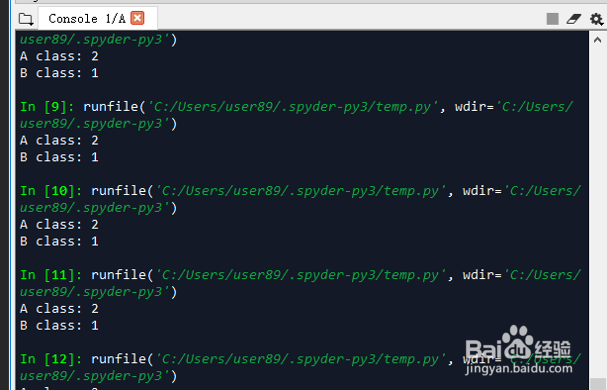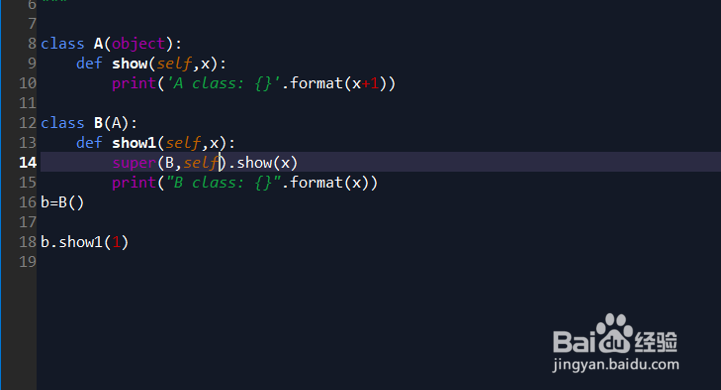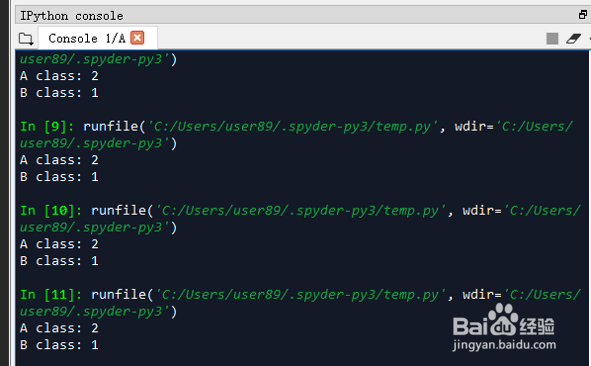python中 super()函数如何使用
1、python 3.x版本的实现:super().父类方法
class A(object):
def show(self,x):
print('A class: {}'.format(x+1))
class B(A):
def show1(self,x):
super().show(x)
print("B class: {}".format(x))
b=B()
b.show1(1)

2、结果:
A class: 2
B class: 1

3、python 2.x版本实现:super(子类名,self).父类方法
class A(object):
def show(self,x):
print('A class: {}'.format(x+1))
class B(A):
def show1(self,x):
super(B,self).show(x)
print("B class: {}".format(x))
b=B()
b.show1(1)

4、运行结果:
A class: 2
B class: 1

5、实例:
class FooParent(object):
def __init__(self):
self.parent = 'I\'m the parent.'
print ('Parent')
def bar(self,message):
print ("%s from Parent" % message)
class FooChild(FooParent):
def __init__(self):
# super(FooChild,self) 首先找到 FooChild 的父类(就是类 FooParent),然后把类B的对象 FooChild 转换为类 FooParent 的对象
super(FooChild,self).__init__()
print ('Child')
def bar(self,message):
super(FooChild, self).bar(message)
print ('Child bar fuction')
print (self.parent)
if __name__ == '__main__':
fooChild = FooChild()
fooChild.bar('HelloWorld')

6、运行结果:
Parent
Child
HelloWorld from Parent
Child bar fuction
I'm the parent.
